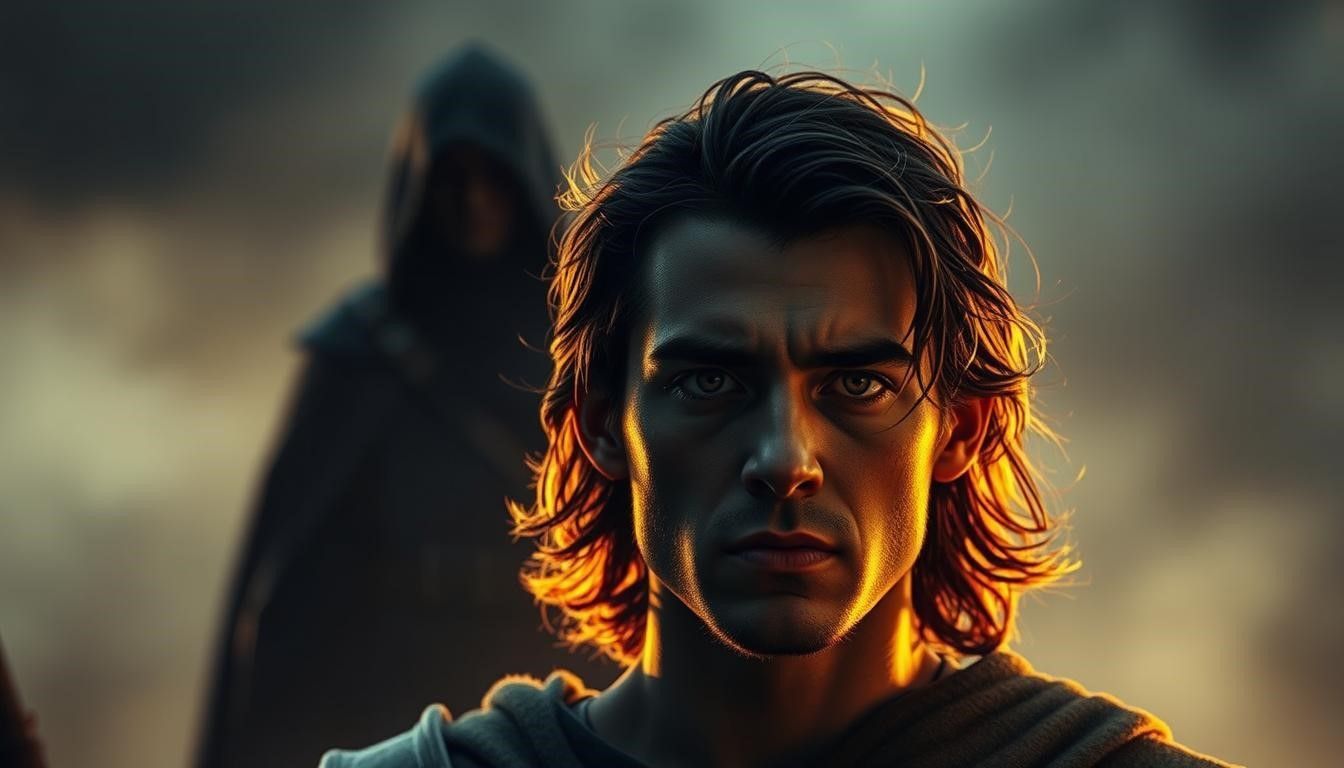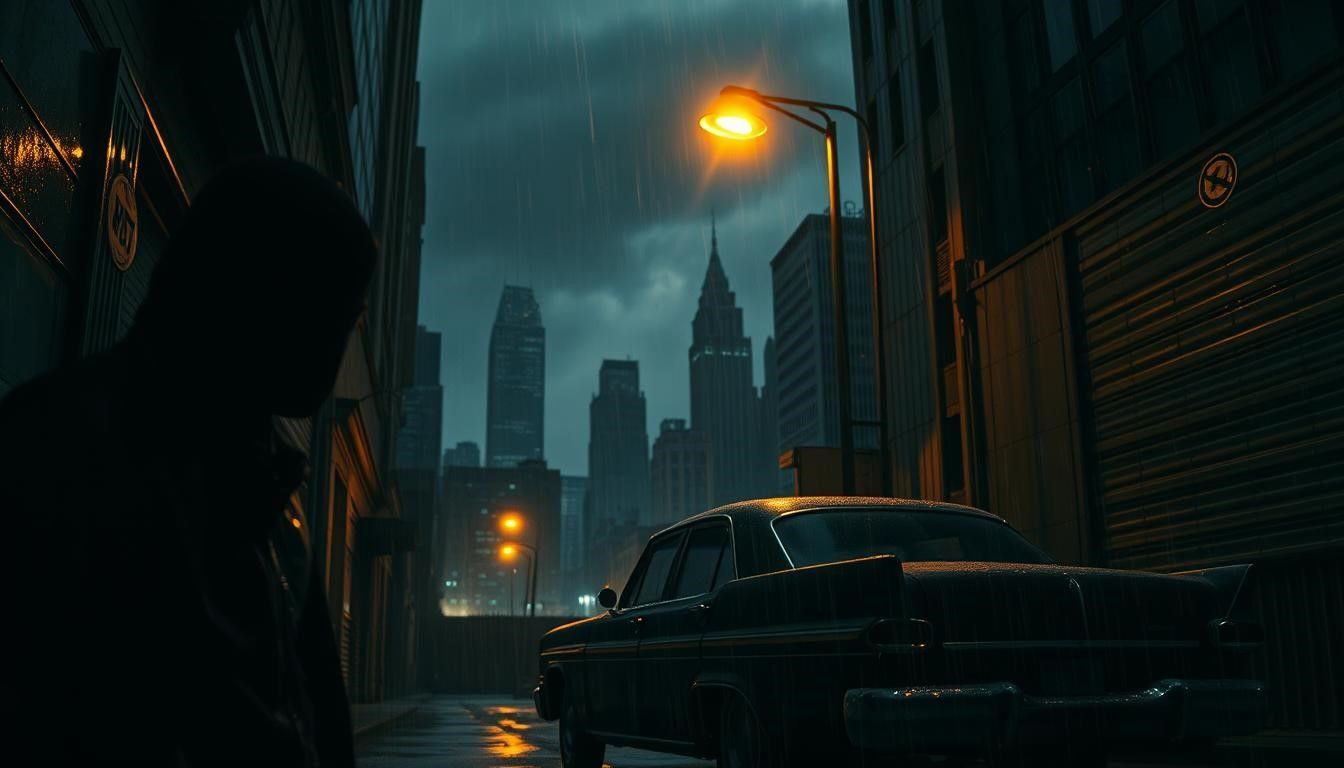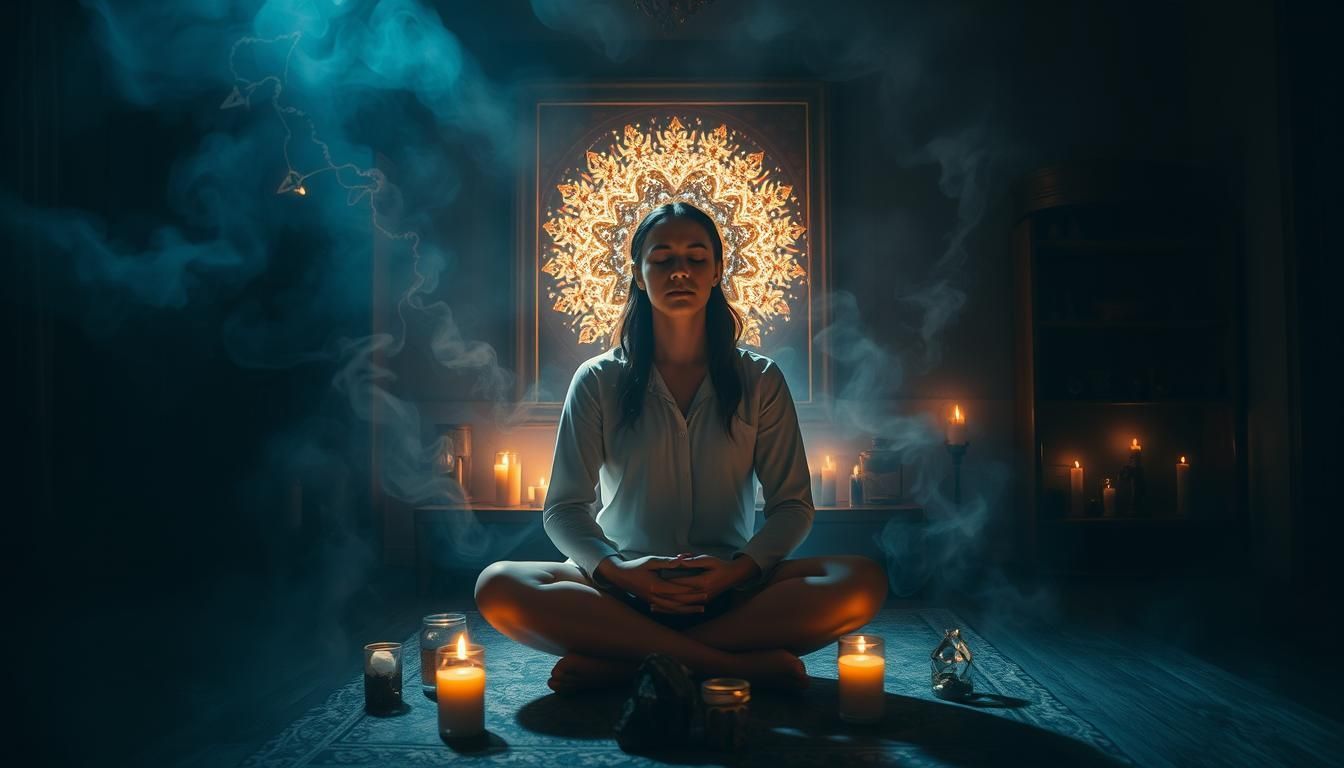Why Flawed Heroes Make the Best Characters
Have you ever noticed how the most memorable characters in stories aren't perfect? They struggle, make mistakes, and sometimes fail. This makes them feel real. Perfect characters who always know the right thing to do can quickly become boring.

Research shows that imperfect protagonists help us explore our own moral questions. They remind us that everyone faces challenges. These characters feel authentic because they reflect how real people navigate an imperfect world.
This exploration draws from Ralph Riccie's decades of experience. As an author and noir enthusiast, he understands complex characters. His work shows how vulnerability creates stronger emotional connections in writing.
The best heroes aren't those without flaws. They're the ones who grow through their struggles. This makes their journeys meaningful and relatable to readers.
Key Takeaways
- Imperfect characters create stronger emotional connections with readers
- Realistic struggles make protagonists feel authentic and relatable
- Character growth through challenges drives compelling stories
- Modern storytelling embraces moral complexity over perfection
- Vulnerability allows readers to see themselves in characters
- Internal conflict creates dramatic tension that keeps stories engaging
Introduction
The definition of a hero in modern narratives is far more complex than it once was. Over time, we've moved away from paragons of virtue. Today's compelling figures are often just as broken as the world they inhabit.
Overview of Imperfect Protagonists
Contemporary literature celebrates authentic characters. Readers now seek heroes who grapple with the same doubts and moral dilemmas that real people face in everyday life. This shift reflects a desire for genuine human experience in stories.
Ralph Riccie's unique perspective, shaped by decades in finance, informs this approach. He understands how
people make tough choices under pressure. This insight is crucial for crafting believable protagonists.
Setting the Stage with Real-World References
We are naturally skeptical of anyone who seems too perfect. Our experience tells us every person has weaknesses. The most memorable fictional characters are the ones who feel like they could walk off the page.
These figures serve as mirrors. They reflect our own
flaws and show that heroism is possible despite them. This internal and external
conflict is what makes a story truly engaging.
Defining Heroism and Flaws
Literary heroes have evolved from untouchable icons to relatable figures with human struggles. This transformation reflects our changing understanding of what makes a person truly heroic.
The Evolution of the Hero in Literature
In ancient epics, heroes were often demi-gods or royalty. They possessed superhuman strength and faced external monsters. These figures represented ideal virtues for their time.
Medieval romances introduced knights on quests for honor. They followed strict codes of chivalry and justice. Their perfection served as moral examples for society.
The modern era brought a dramatic shift. Characters became more like real people from our world. Ralph Riccie's noir influences show how heroes can operate in moral gray areas.
Today's protagonists carry burdens and secrets. They seek justice through unconventional means. This makes them feel authentic to contemporary readers.
Why Perfection Falls Short
Flawless characters leave no room for growth. Without internal conflict, their journeys feel empty. Readers cannot connect with someone who never struggles.
Perfect heroes from the past seem unrealistic now. We know that in the real world, every person has weaknesses. Stories need characters who reflect this truth.
| Literary Period | Hero Type | Key Characteristics | Example |
|---|---|---|---|
| Ancient Epic | Mythological Figure | Superhuman strength, divine favor | Achilles |
| Medieval Romance | Chivalrous Knight | Moral purity, code of honor | King Arthur |
| Modern Fiction | Complex Individual | Internal conflict, personal growth | Noir detectives |
| Contemporary | Relatable Person | Human flaws, moral ambiguity | Modern protagonists |
A hero is anyone who stands against evil despite their imperfections. This definition creates more meaningful stories. It allows characters to grow in believable ways.
Readers today want truth in their fiction. They reject characters who seem too perfect. Real struggle makes a hero's journey compelling.
The Dynamics of Conflict in Character Development
What separates memorable characters from forgettable ones isn't their strengths, but how they handle their weaknesses. This struggle creates the friction that drives compelling narratives forward.
Conflict as a Catalyst for Growth
Every meaningful character arc begins with obstacles. Without challenges, protagonists remain static. Their true nature only emerges when tested.
As Ralph Riccie's experience in quality management shows, identifying problems creates improvement opportunities. In storytelling, character
flaws serve the same purpose. They generate necessary friction for development.
Internal
conflict arises when a
character battles their own limitations. External
conflict occurs through clashes with
others or circumstances. Both types drive the narrative forward.
Realism Through Struggle and Setbacks
Authentic development requires failures, not just victories. People learn through difficult choices and hard-won lessons. The same applies to fictional characters.
Readers connect with protagonists who sometimes make poor
choices despite knowing better. This uncertainty creates dramatic tension. We genuinely worry about their outcomes.
| Conflict Type | Source | Impact on Character | Reader Engagement |
|---|---|---|---|
| Internal | Personal flaws, moral dilemmas | Reveals true nature, drives personal growth | Creates emotional investment |
| External | Antagonists, society, circumstances | Tests abilities, forces adaptation | Generates suspense and anticipation |
| Dual-Layer | Combination of internal and external | Creates complex development arcs | Provides deeper satisfaction |
Small imperfections can escalate into major plot complications. This natural progression makes stories feel organic. The way characters confront their limitations defines their journey.
Relatability ultimately trumps likability in character development. Audiences follow even deeply imperfect protagonists when their struggles feel authentic. The possibility of
growth after a
fall keeps readers invested.
Flawed Heroes in Modern Literature
Walk into any bookstore or browse a streaming service today, and you'll find a common thread among popular narratives: imperfect main characters. These flawed heroes have moved from the fringe to the center of storytelling. They reflect our modern understanding of a complex world.
Narratives of Imperfection
Contemporary stories across genres celebrate psychological depth. Think of Katniss Everdeen's guarded nature or Tony Stark's initial arrogance. These traits create engaging characters.
This shift owes much to traditions like noir fiction. Authors like Ralph Riccie draw from this genre's love for morally gray
characters. His
writing shows how ambiguity creates richer
stories.
From Walter White's pride to Lisbeth Salander's trauma,
flaws drive the plot. They are not weaknesses but sources of conflict and growth. This makes the journey compelling for readers.
Relatable Characters Please Readers
Why do we connect with these characters? It's because they feel real. A perfect hero is hard to imagine in real life.
Seeing an imperfect
person overcome challenges is validating. It gives us hope for our own struggles. These
ones show that growth is possible for everyone.
Readers find deep satisfaction in following a
character's evolution over
time. This emotional investment is what turns a good story into a memorable
one. For examples of this principle in action, explore Ralph Riccie's books.
Author's Noir Influence and Real-World Insights
Ralph Riccie brings a distinctive lens to character creation. His perspective is shaped by over forty years of professional rigor and a deep passion for the shadowy world of noir.
This unique blend of experience informs his approach to writing authentic, compelling
characters.
Ralph Riccie's 40+ Years in Quality and Finance
For decades, Riccie's work involved identifying flaws and solving complex problems. This analytical background translates directly into his storytelling.
He understands how
flaws are not just weaknesses but catalysts for growth. His daily blog, offering financial advice for ten years, shows his skill in making complicated
things clear.
This ability to communicate complex ideas is a key
part of his writing. It helps readers connect with the moral dilemmas his
characters face.
Bridging Noir Aesthetics with Modern Character Arcs
Riccie is a devoted student of noir, with an extensive collection of books and films. This genre specializes in morally complex heroes navigating a tough world.
These classic figures are often cynical and shaped by
life experience. Yet, they hold to a personal code.
Riccie's
work adapts this aesthetic for modern
stories. He bridges the gap between classic noir tension and what today's readers expect.
His
characters feel real because they are built on an understanding of how
people make decisions under pressure.
Explore his
series of books at whatitallmeansbooks.com/books. You'll see how he honors noir traditions while creating fresh, engaging narratives for our
time.
Crafting Characters that Resonate With Readers
Creating authentic characters requires moving beyond simple hero archetypes. The most memorable protagonists feel like real people with genuine strengths and weaknesses. This approach makes readers emotionally invested in their journeys.
Ralph Riccie's background in quality management informs his systematic approach to character development. He treats character creation like problem-solving, identifying how vulnerabilities drive narrative tension. His financial advising experience adds depth to understanding human decision-making.

Strategies for Authenticity in Writing
Think of character flaws as vulnerabilities rather than weaknesses. A protagonist's deepest fears or emotional wounds create compelling conflict. These traits should directly impact the plot and force difficult choices.
Reveal character through action rather than description. Show how your protagonist responds under pressure. Their decisions during crises reveal their true nature more than any backstory.
Develop antagonists with equal care. A compelling villain believes they're justified in their actions. Give them motivations that make sense from their perspective.
Balancing Virtues and Vices in Protagonists
Create characters who contain contradictions, just like real people. A generous person might struggle with envy. A brave character could harbor secret fears.
Allow your protagonist to make poor choices and face consequences. Readers forgive almost any flaw when it leads to meaningful growth. The journey after a fall often proves most compelling.
Writers should rig challenges like a carnival shooting gallery—difficult but not impossible. This balance maintains tension while allowing character development through struggle.
Conclusion
Ultimately, the most compelling characters are those who reflect our own complex reality. They show us that striving for goodness is a journey, not a destination. This honest approach to storytelling creates a powerful bond with readers.
Ralph Riccie's unique background brings this principle to life. His decades of experience and deep noir knowledge inform his stories. He crafts characters who feel authentic because they are built on real human psychology.
These
flawed heroes remind us that anyone can make a stand for
justice. Their struggles validate our own. This is the
reason they resonate so deeply across book
series and stand-alone novels.
Discover how Riccie applies these
things in his own
work. Visit whatitallmeansbooks.com to learn more. Explore his captivating
series of books at whatitallmeansbooks.com/books to see a master at
work.
Frequently Asked Questions About Flawed Heroes Make the Best Characters
What makes a character with imperfections more engaging than a perfect one?
People with shortcomings are simply more relatable. When a person in a story has a troubled past or makes poor choices, it mirrors real life. This creates a deeper connection for the reader, making the journey feel authentic and the stakes much higher.
How does internal conflict improve a protagonist's story?
Internal struggle is a powerful catalyst for growth. Watching a figure wrestle with their own nature or past mistakes makes their eventual triumphs more meaningful. This realism through setbacks keeps the narrative compelling and the character's development believable.
Can you give an example of a well-known flawed protagonist?
Many iconic figures in literature, like those in detective noir stories, are defined by their vices. These individuals often operate in a gray area, challenging traditional ideas of justice. Their complexity makes them memorable and their stories resonate long after the last page.
How can writers effectively balance good and bad traits in a main character?
The key is to ensure the character's virtues and vices are intertwined. A person might be fiercely loyal but also stubborn, leading to both positive and negative outcomes. This balance creates a multidimensional individual who feels genuine and drives the plot forward through their choices.
Why do readers often prefer protagonists who are not purely good?
Most people see themselves as a mix of strengths and weaknesses. A hero who never falls short can feel distant. Characters who grapple with real-world problems and moral ambiguity are far more pleasing and easier to root for, as their humanity shines through.



